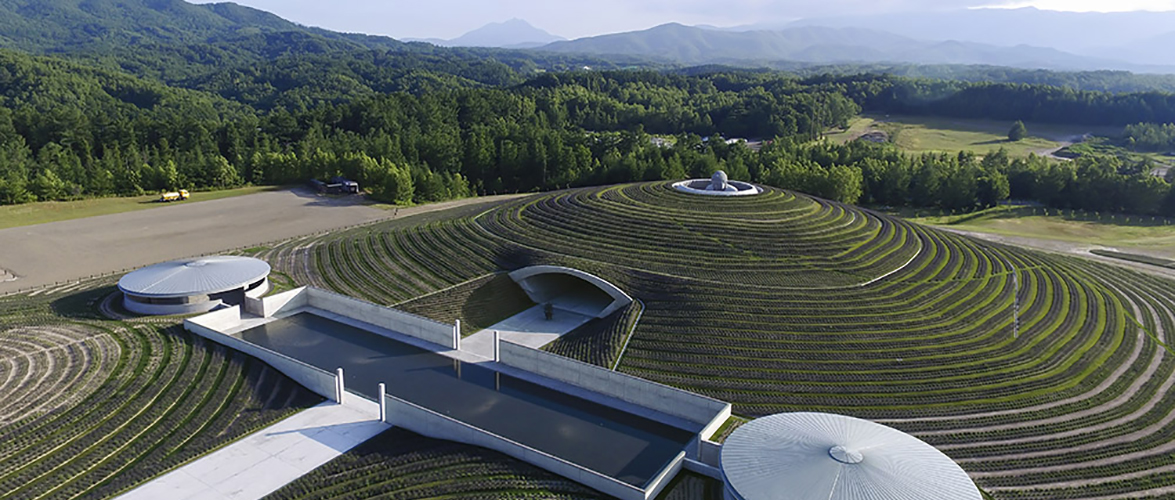
Spirals in Kosmorganica
In Kosmorganica, the spiral appears in music composition, choreography, architecture, gardens, and visual art. Anthropologists say the spiral form is a symbol of the evolution of all humanity. [1] Discover the spiraling journey to self-transformation through Kosmorganic art experiences.
Time has most commonly been represented as a circle, sometimes with an indicator pointing to numbered sections. In modern Western life, we chop time into linear pieces as we run from task to task and appointment to appointment, always preoccupied with the absolute limits of early or late. However, in indigenous cultures, days are continuous, and a lifespan is represented in a spiral shape. The anthropologist Tim Ingold researched indigenous tribes and their way of viewing the journey of life. He observed that the lifelines of ancient cultures look fluid, like threads and traces, not dots and connectors. For example, an Alaskan Inuit baby’s birth is represented by a dot that immediately changes into a line once it begins to crawl.[2] As the baby makes its journey through life, it leaves an invisible spiral pattern. The Australian Walbiri people represent a lifeline as rings embedded in rings connected by lines. The lines symbolize one’s life path, and the circles mark milestones or significant turning points in life. Cross-culturally, the spiral symbolizes transition or liminal stages of the birth-life-death-rebirth cycle. Archeologists have concluded that spiral patterns carved in stone age structures reveal that reincarnation is an ancient notion. For thousands of years, cultures worldwide have been using the spiral in temples, gardens, and monuments. The ancient Egyptians and Greeks built labyrinths that were essentially complex spirals that illustrated the different paths one can take in life. The Nazca and the Peruvian people carved spirals into the landscape. Spirals in the cave paintings in Maltravieso, Spain, date 40,000 years ago. We can still visit spiral labyrinths on the marble floors of cathedrals and in the gardens of former European aristocrats.
Spiral in Kosmorganica
Spirals in the landscape of Kosmorganica are reminiscent of Zen gardens that emphasize austerity, simplicity, subtlety, magic, and stillness. Some spirals are impressed directly into the landscape. Examples in Kosmorganica include Robert Smithson’s Spiral Jetty [ figure 2 ], Robert Irwin’s Central Garden at the Getty Center, Tadao Ando’s spiral rooftops of Makomanai Takino Cemetery, and Andy Goldsworthy’s temporary earthworks.
Spirals also appear in Kosmorganic choreography. Artists such as Lita Albuquerque (Stellar Axis), James Lee Byars (Mile Long Paper), Albert Yonathan Setyawan(Cosmic Labyrinth: The Bells), and Chrysanne Stathacos (The Rose Mirror Mandala) use the spiral shape in their performances. Stathacos and Setyawan incorporate their Buddhist affiliation into their art with the mandala diagram, a variation of a spiral. Explore more on cosmograms.
[1] John Briggs, Fractals: The patterns of chaos: discovering a new aesthetic of art, science, and nature (Brattleboro, Vermont: Echo Point Books & Media, 2015), 113.
[2] Tim Ingold, Lines: A brief history (London: Routledge, 2016), 78.
